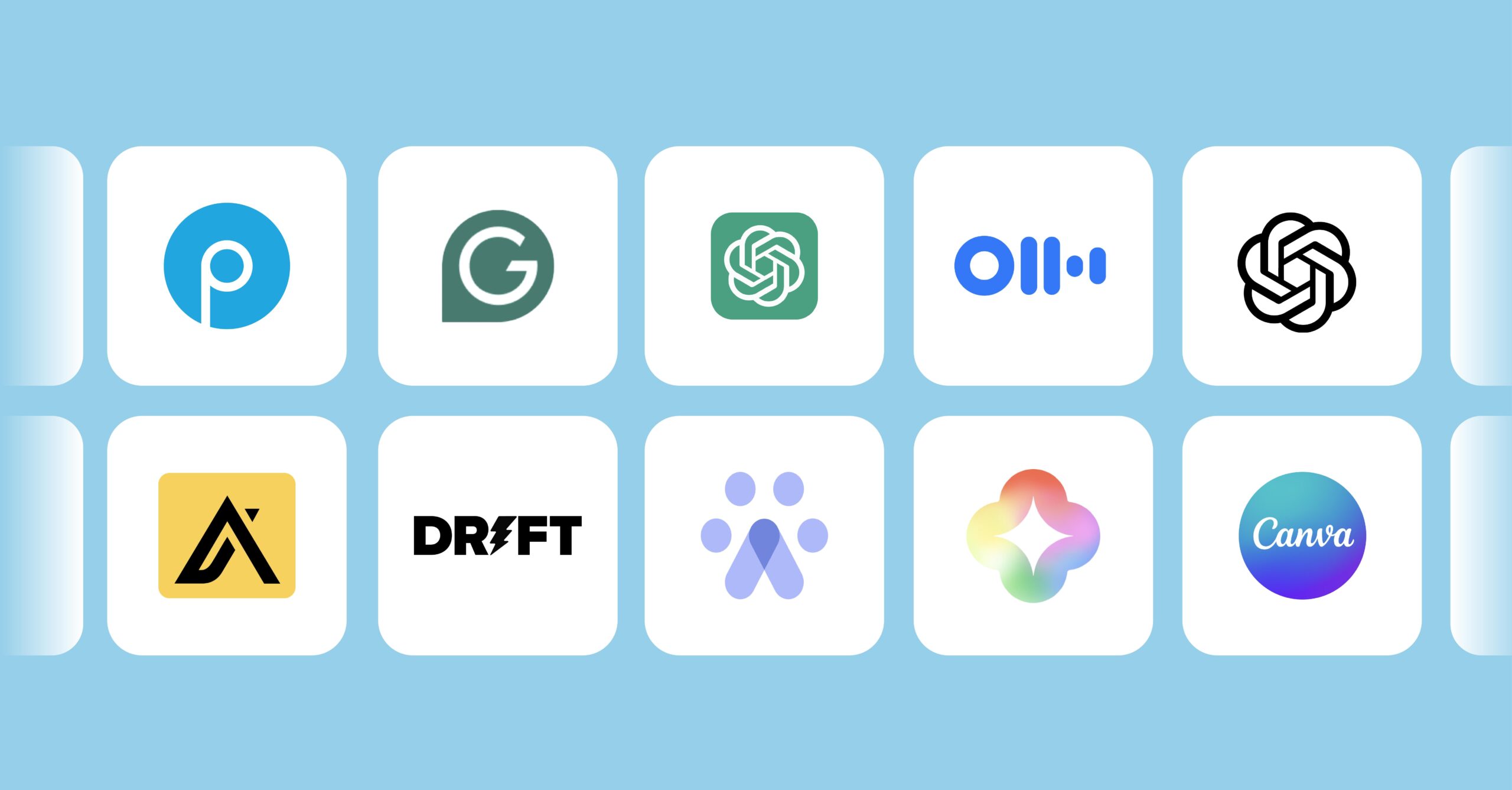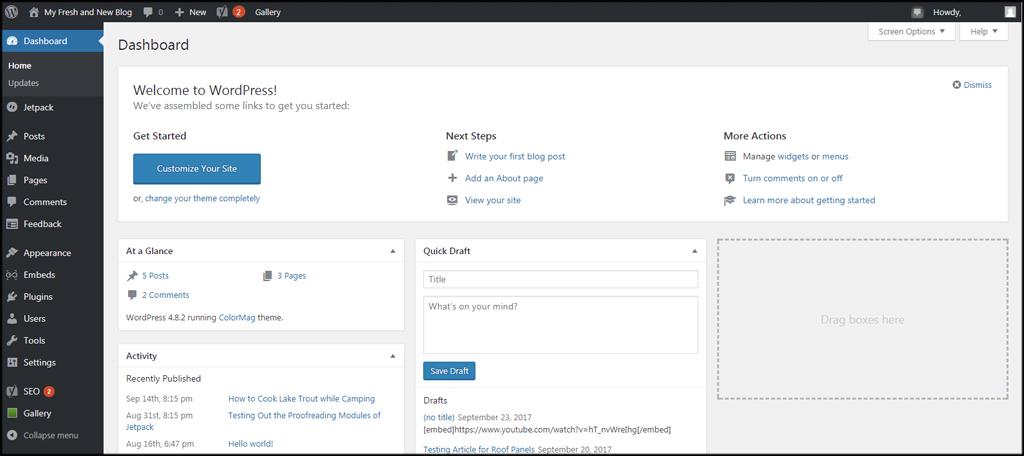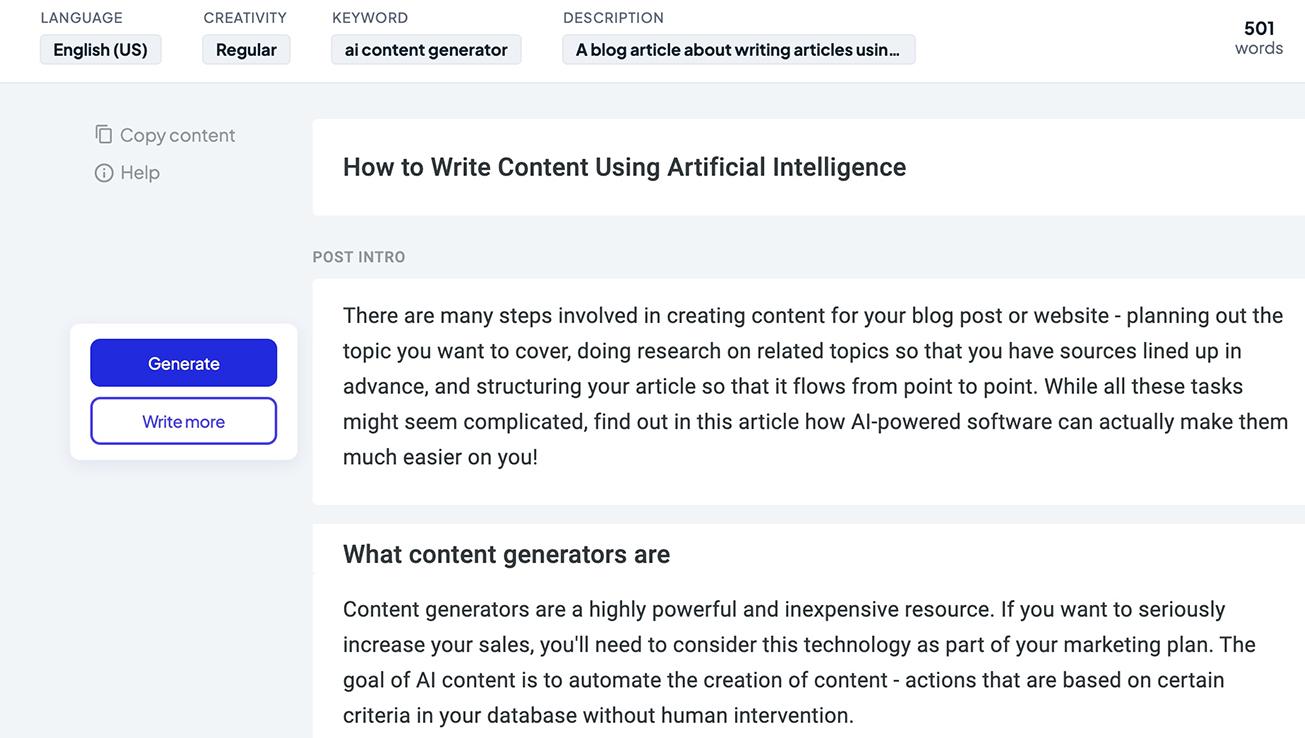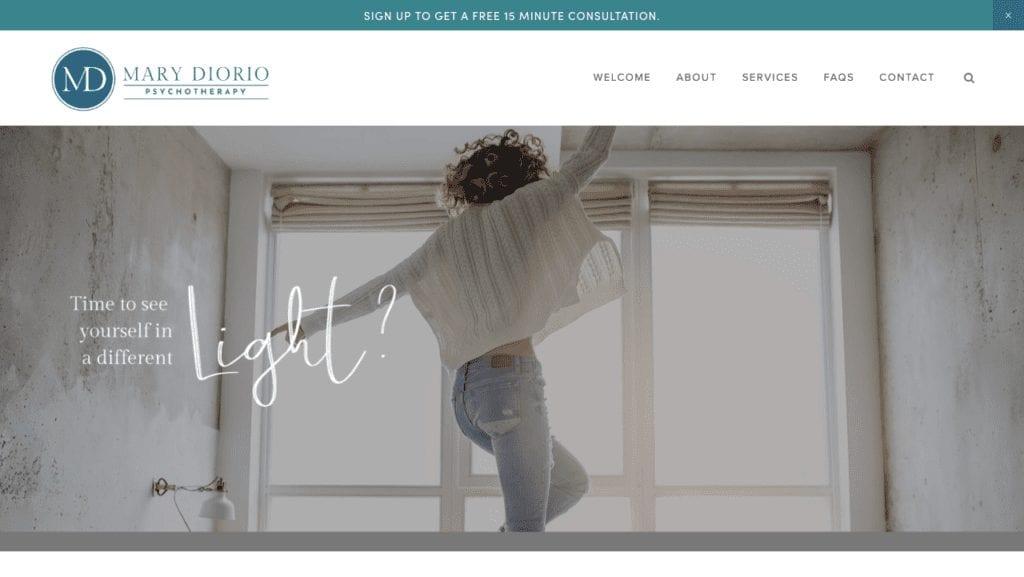
Introduction:
In a world where mental health awareness is at an all-time high, finding the right therapist has never been more important—or challenging. With a plethora of options available, how do you decide who to trust with your emotional well-being? One of the first places many people turn to is the therapist’s website. A well-designed site can offer a glimpse into a therapist’s philosophy, approach, and personality, helping potential clients feel more comfortable in taking that crucial first step.
But not all therapist websites are created equal. Some stand out for their warmth, clarity, and innovative design, while others miss the mark entirely. In this article, we’ve rounded up the 25 Most Inspiring Therapist Websites of 2024, showcasing those that not only look great but also resonate deeply with visitors. Whether you’re a therapist looking to revamp your own site or someone on a quest for the right therapist, these websites offer valuable insights, creative ideas, and a reminder of what makes the healing journey truly special. So, let’s dive in and explore the digital spaces that are making a real difference in the world of therapy!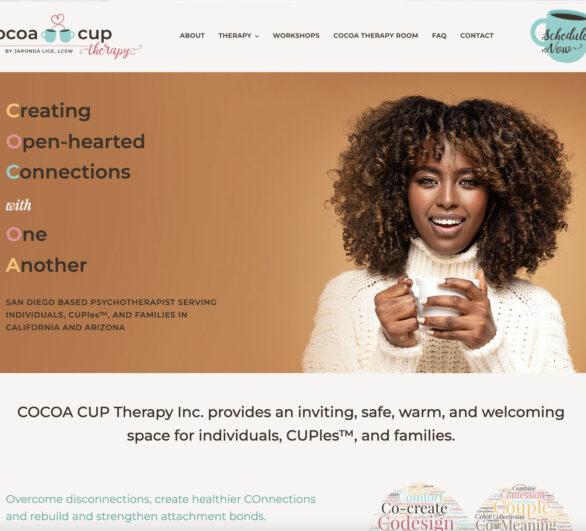
Discovering the Best Therapist Websites of 2024
In 2024, the digital landscape for therapy and mental health resources has evolved remarkably, showcasing creativity and empathy through design. These therapist websites do more than just inform; they engage, inspire, and foster a sense of community. Here are some key elements that make these sites stand out:
- User-Friendly Navigation: A seamless experience is essential. The best therapist websites prioritize intuitive layouts, allowing visitors to easily find the information they need.
- Engaging Visuals: Incorporating calming colors and inviting images creates an atmosphere of safety and comfort, which is crucial for mental health services.
- Resource-Rich Content: Websites that provide valuable articles, tips, and downloadable resources empower clients to take charge of their mental health journey.
- Personal Connection: Many top sites feature therapist bios that highlight personal stories and specialties, helping potential clients feel a connection before even stepping into a session.
A noteworthy trend this year is the use of interactive tools, such as self-assessment quizzes and mental health check-ins. These features not only engage visitors but also encourage self-reflection and personal growth. For instance, a site that includes a simple quiz to assess stress levels can provide immediate feedback, making the experience more interactive.
Another major highlight is the integration of teletherapy options. As virtual sessions continue to gain popularity, many leading therapist websites now feature user-friendly portals for booking appointments, making payments, and accessing secure video calls. This accessibility breaks down barriers, ensuring that mental health support is readily available to those who need it most.
| Website | Highlight | Unique Feature |
|---|---|---|
| CalmMindTherapy.com | Holistic Approach | Guided Meditation Resources |
| TherapyConnection.org | Community Support | Group Therapy Forums |
| EmpowerHealing.org | Client-Centered Care | Personalized Treatment Plans |
| MindfulPathways.com | Trauma-Informed Practice | Interactive Storytelling Tools |
Moreover, a growing number of sites embrace inclusivity, offering resources in multiple languages and various formats to cater to diverse populations. This commitment to accessibility ensures that everyone can find the help they need, regardless of their background or language proficiency.
As we explore these inspiring examples, it’s clear that the best therapist websites of 2024 are not just about aesthetics; they reflect a deeper understanding of the therapeutic process and a commitment to the well-being of their clients. By combining technology with compassion, these websites are setting a new standard for mental health resources online.
What Makes a Therapist Website Truly Inspiring
In a digital landscape saturated with information, a therapist’s website should not only serve as a gateway to services but also as a source of inspiration and comfort for potential clients. When visitors land on a therapist’s site, they should immediately feel a sense of connection, reassurance, and hope. This emotional resonance can be achieved through several key elements that transform a standard website into an inspiring one.
First and foremost, visual appeal plays a crucial role. The use of soothing colors, engaging images, and easy-to-read typography can create an inviting atmosphere. A well-chosen color palette that reflects calmness, such as soft blues or greens, can set the right tone. Incorporating images that depict warmth—like nature scenes or serene settings—helps visitors feel at ease. A clean layout that avoids clutter is essential, allowing users to navigate with ease and focus on the content that truly matters.
Another important feature is authentic storytelling. A therapist’s personal story, philosophy, and approach should shine through on their website. Sharing a journey can help potential clients relate and feel understood. This could include testimonials from past clients (with permission), which not only provide social proof but also create a sense of community. When individuals see that others have faced similar challenges and found help, it can spark the courage to reach out for support.
Content that resonates is vital as well. A blog or resource section filled with insightful articles, coping strategies, and mental health tips can position the therapist as a knowledgeable and approachable expert. This not only provides value to visitors but also demonstrates the therapist’s commitment to mental wellness. Consistent, high-quality content reinforces the idea that the therapist is dedicated to ongoing learning and support.
| Key Elements | Description |
|---|---|
| Visual Design | Inviting colors and images that soothe the mind. |
| Personal Connection | Authentic storytelling and sharing personal journeys. |
| Resourceful Content | Informative articles and practical tips on mental health. |
| User-Friendly Navigation | Intuitive layouts that make information easily accessible. |
Moreover, interactive elements can engage visitors and enhance their experience. Features like self-assessment quizzes, downloadable resources, or even guided meditations can provide immediate value. When visitors interact with the site, they feel more involved and are likely to take the next step towards reaching out. Including options for scheduling appointments directly through the website adds convenience and encourages action.
a truly inspiring therapist website must emphasize trust and professionalism. Clear credentials, areas of specialization, and contact information should be readily available. This transparency instills confidence in visitors. It’s essential to showcase that the therapist is not only qualified but also genuinely cares about the well-being of their clients. Adding a friendly, professional photo alongside a warm welcome message can make a significant difference in breaking the ice.
an inspiring therapist website blends aesthetics with authenticity, providing a well-rounded experience that encourages visitors to take the next step. By focusing on visual appeal, storytelling, valuable content, interactivity, and professionalism, therapists can create an online presence that not only informs but inspires hope and healing.
The Importance of User-Friendly Design in Therapy Websites
In today’s digital age, the design of therapy websites plays a crucial role in how potential clients perceive and engage with therapists. A user-friendly design is not just about aesthetics; it significantly impacts the overall experience of visitors and can ultimately influence their decision to reach out for help.
When a website is intuitively designed, it creates a sense of comfort and trust. Visitors are more likely to stay on a site that is easy to navigate, where information is organized logically and where they can quickly find what they need. This is particularly important in therapeutic settings, where individuals may already be feeling vulnerable or anxious about seeking help.
Consider the following elements that make a therapy website user-friendly:
- Clear Navigation: A straightforward menu structure helps users find services, contact information, and resources without frustration.
- Responsive Design: With more users accessing websites via mobile devices, a responsive layout ensures that the site functions well on any screen size.
- Accessible Content: Text should be legible with appropriate font sizes and contrast. This makes it easier for all users, including those with visual impairments, to read and engage with content.
- Fast Loading Times: A slow website can deter visitors. Optimizing images and minimizing code can help improve speed.
Furthermore, the tone and voice of the website content contribute significantly to user experience. Using compassionate language can resonate with visitors, making them feel understood and valued. It’s essential for therapists to convey their professional approach and philosophy clearly, helping potential clients feel a sense of connection even before they make contact.
To illustrate the impact of effective design, here’s a quick comparison of websites with user-friendly features versus those that lack them:
| Website Feature | User-Friendly Example | Poor Example |
|---|---|---|
| Navigation | Simple, labeled tabs | Complex dropdowns |
| Mobile Optimization | Responsive layout | Non-responsive design |
| Content Clarity | Concise, easy-to-read text | Dense paragraphs with jargon |
As therapists continue to establish their online presence, prioritizing user-friendly design is essential. This not only enhances the visitor experience but also fosters a supportive environment that encourages individuals to seek assistance. Ultimately, a well-designed therapy website can be a powerful tool for mental health professionals, helping them connect with clients in a meaningful way.

How Compelling Content Can Elevate Your Practice
Creating compelling content is a fundamental aspect of building a thriving therapy practice. It not only serves to attract potential clients but also establishes your authority and credibility in the field. In a digital landscape saturated with information, engaging content can make all the difference. Here’s how you can leverage it to elevate your practice:
Build Trust and Connection
When potential clients visit your website, they crave connection. By sharing relatable stories, insights, and therapeutic techniques, you help them see that they are not alone in their struggles. This humanizes your practice and fosters trust, making visitors more likely to reach out for help.
Showcase Your Expertise
Regularly updated blog posts or resources can demonstrate your knowledge and keep your audience informed. Topics might range from coping mechanisms for stress to the latest research in mental health. This establishes you as a trusted source, encouraging visitors to return and ultimately, to seek your services.
Utilize Visual Storytelling
Incorporating visuals into your content can enhance engagement significantly. Use infographics, videos, or even simple images that resonate with your messages. For example, a video explaining mindfulness techniques can be more impactful than text alone. Here’s a quick breakdown of how different media can enhance your content:
| Media Type | Benefits |
|---|---|
| Videos | Engagement, clarity, and connection |
| Infographics | Visual learning, easy sharing |
| Images | Emotional resonance, relatability |
Encourage Interaction
Compelling content doesn’t just inform; it invites interaction. Consider adding comment sections, surveys, or discussion forums to your website where clients can share their thoughts. This not only builds a community but also gives you valuable insights into your audience’s needs and preferences.
Optimize for Search Engines
Creating high-quality content is great, but it must be discoverable. Utilize SEO strategies to ensure that your content ranks well in search engine results. Use relevant keywords, meta descriptions, and alt tags for images to enhance visibility. This way, individuals seeking mental health support can easily find your practice.
Share Client Success Stories
Stories of transformation can be incredibly motivating. With consent, share testimonials or case studies that illustrate the effectiveness of your practice. This not only validates your methods but also inspires hope in potential clients who may be hesitant to reach out.
Keep It Authentic
authenticity is key. Your content should reflect your unique voice and philosophy. When clients perceive you as genuine, they are more likely to feel comfortable reaching out. Authentic content creates a lasting impression, setting you apart from other therapists in the field.
Building Trust Through Professionalism in Online Presence
In an era where the digital landscape shapes perceptions, establishing a strong online presence is crucial for therapists. Potential clients often form their first impressions based on what they see online, making it essential to project professionalism and authenticity. By curating a thoughtful and inviting website, therapists can foster an environment of trust, allowing visitors to feel comfortable and understood even before the first session.
Visual Appeal plays a significant role in creating a trustworthy online presence. A well-designed website that prioritizes aesthetics can enhance credibility. This includes:
- High-quality images that resonate with the therapeutic journey.
- A cohesive color palette that reflects calmness and professionalism.
- A user-friendly layout that is easy to navigate.
Additionally, content is king. Providing valuable, insightful, and relevant information can position a therapist as an authority in their field. Here are some effective strategies:
- Regularly updated blog posts addressing common mental health issues.
- Informative articles about different therapeutic approaches.
- Client testimonials that highlight positive outcomes and experiences.
Moreover, transparency is key in building trust. Including a clear description of services, pricing, and the therapist’s qualifications can demystify the therapeutic process. Consider creating a dedicated FAQ section to address common concerns and questions:
| Common Questions | Short Answers |
|---|---|
| What should I expect in my first session? | We’ll discuss your goals and concerns in a safe, confidential space. |
| How do you ensure confidentiality? | All sessions are private, and your information is secure. |
| What types of therapy do you offer? | I specialize in cognitive-behavioral therapy and mindfulness practices. |
Lastly, engaging with clients through social media can enhance your professional image. Sharing insights, success stories, and mental health tips can create a community of support and trust. Be authentic and approachable, and encourage interaction by responding to comments and messages, which fosters a deeper connection.
By prioritizing professionalism in your online presence, you can transform your website into a beacon of trust and support, ultimately attracting the clients who need your services the most. As we explore the most inspiring therapist websites of 2024, let these examples guide you in enhancing your digital footprint.
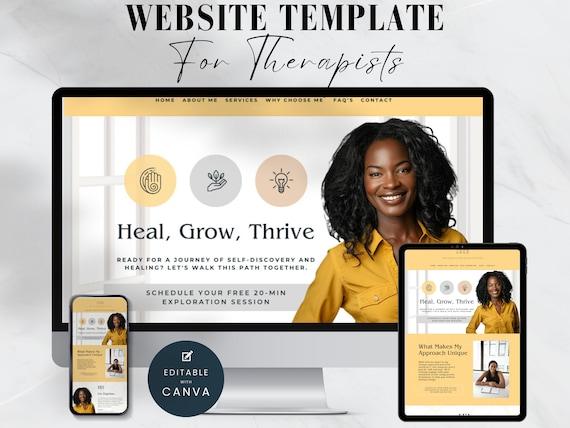
Essential Features Every Therapist Website Should Have
Creating a therapist website that resonates with potential clients is essential for building trust and credibility. Here are some vital features that can elevate your online presence and make your practice stand out.
- User-Friendly Navigation: Ensure that your website is intuitive. Visitors should be able to find the information they need with minimal clicks. A clear menu structure and strategically placed links can guide them seamlessly through your services, about page, and contact details.
- Compelling About Page: Share your story! A well-crafted about page that includes your qualifications, therapy approach, and personal journey can help foster a connection with potential clients. Use warm, inviting language to make visitors feel at ease.
- Service Descriptions: Clearly outline the various services you offer. Use simple language to explain different therapeutic modalities and what clients can expect. This transparency helps demystify the therapy process and encourages inquiries.
- Testimonials Section: Social proof is incredibly powerful. Include a section for client testimonials that highlights positive experiences. Ensure you have permission to share these stories, as they can significantly enhance your credibility.
Incorporating an easily accessible blog can also be a game-changer. A blog allows you to share insights, coping strategies, and educational content related to mental health. This not only positions you as an expert but also provides visitors with valuable resources that can encourage them to reach out.
| Feature | Description |
|---|---|
| Contact Information | Make sure your phone number, email, and office address are prominently displayed for easy access. |
| Online Booking System | Integrating an online scheduling tool allows clients to book appointments at their convenience. |
| Resource Library | A collection of helpful articles, worksheets, or videos can provide additional support to clients. |
| Mobile Responsiveness | Your website must look and function well on mobile devices, as many users browse on their phones. |
Security and privacy are paramount, especially in the mental health field. Ensure your website has SSL certification to protect client information and consider including a privacy policy to explain how you handle data. This not only builds trust but also complies with legal standards.
consider engaging your visitors through a newsletter sign-up option. This allows you to keep in touch and share updates, articles, or any free resources you create. Building a community around your practice can lead to more referrals and establish long-term relationships with clients.

Showcasing Your Personality: Creating Authentic Connections
In the world of therapy, making a genuine connection with clients is pivotal. One of the best ways to achieve this is by infusing your personality into your website. Your online presence should reflect who you are, inviting potential clients to feel comfortable and understood even before they engage with you. Here are some effective strategies to showcase your individuality:
- Personalized Design: Choose colors, fonts, and images that resonate with your style. A website filled with elements that reflect your personality can create an inviting atmosphere.
- Authentic Content: Write in your own voice. Share your thoughts on therapy, mental health, and personal experiences. This transparency not only builds trust but also encourages potential clients to reach out.
- Client Testimonials: Highlight success stories from clients. These testimonials can reflect your unique approach, illustrating how your personality impacts their journey.
- Interactive Elements: Consider including quizzes or self-assessments that align with your therapeutic style. This not only engages visitors but also gives them a taste of what to expect in your sessions.
The use of imagery can also enhance your website’s connection with visitors. Personal photos—whether you’re in your office or enjoying a favorite hobby—can humanize your practice. When potential clients see a face behind the name, they are more likely to feel comfortable reaching out. It establishes a sense of trust and relatability that’s essential in the therapeutic relationship.
Another critical aspect is your bio section. Instead of a traditional, dry biography, tell your story. Share why you became a therapist, what drives your passion, and any challenges you’ve overcome. This narrative not only informs potential clients about your qualifications but makes you relatable and approachable.
| Feature | Impact on Connection |
|---|---|
| Personalized Design | Creates an inviting atmosphere |
| Authentic Content | Builds trust through transparency |
| Client Testimonials | Showcases your unique approach |
| Interactive Elements | Engages visitors and provides insight |
Lastly, don’t underestimate the power of social media integration. Linking your social media accounts can give visitors a glimpse into your professional life and your interests. Regular updates, tips, or personal reflections can humanize you, fostering deeper connections. When potential clients see you as a real person, they’re more likely to feel a sense of belonging and safety.
By integrating these elements into your website, you not only present a professional image but also communicate your authenticity. This is key in a field where connection and trust are paramount. Your website should be a reflection of your therapeutic style, inviting individuals to reach out, explore, and ultimately engage with the compassionate care you provide.

The Role of Testimonials in Enhancing Credibility
In the competitive landscape of therapy services, establishing trust is paramount. Testimonials play a pivotal role in enhancing credibility, providing potential clients with a window into the experiences of others. When visitors land on a therapist’s website, they are often looking for reassurance that they are making the right choice. Authentic testimonials can bridge that gap, fostering confidence and encouraging engagement.
Here are a few reasons why testimonials are indispensable:
- Social Proof: People tend to trust the opinions of others, especially those who have faced similar challenges. A collection of positive reviews can act as compelling endorsements.
- Personal Connection: Reading about the transformative journeys of others can create an emotional connection. It allows potential clients to envision their own path towards healing.
- Accountability: When therapists showcase testimonials, it reflects their commitment to providing effective services. It conveys that they take client feedback seriously and are dedicated to continuous improvement.
- Diverse Perspectives: Different clients resonate with different therapists. By featuring a variety of testimonials, therapists can appeal to a wider audience and showcase their versatility.
Moreover, the presentation of these testimonials can also influence how they are perceived. A well-organized layout can enhance readability and impact. Consider using a visually appealing format:
| Client Name | Testimonial | Rating |
|---|---|---|
| Jane D. | “The therapy sessions changed my life. I finally feel in control of my emotions!” | ★★★★★ |
| Mark T. | “A compassionate approach that truly made a difference.” | ★★★★☆ |
| Sarah L. | “I was skeptical at first, but the results speak for themselves.” | ★★★★★ |
Incorporating testimonials into a therapist’s website is not just about listing accolades; it’s about creating a narrative that resonates. When potential clients see real stories and relatable experiences, they are more likely to take the next step and reach out for support. This narrative can also serve as a catalyst for building a community around shared experiences.
Ultimately, testimonials serve as a powerful marketing tool that goes beyond mere words; they are a testament to the therapist’s effectiveness and empathy. By thoughtfully curating and displaying feedback, therapists not only enhance their credibility but also invite potential clients into a space of trust and understanding.

Maximizing Engagement with Interactive Elements
To truly resonate with your audience, incorporating interactive elements into therapist websites can significantly boost engagement. These features not only captivate visitors but also foster a sense of community and connection, essential in the therapeutic space.
Here are some effective interactive elements that can elevate a therapist’s website:
- Self-Assessment Quizzes: Allow visitors to take brief quizzes that can help them identify their mental health needs or determine if they might benefit from therapy. This not only engages users but also provides them with personalized insights.
- Live Chat Options: Implementing a chat feature enables potential clients to ask questions in real-time, fostering a sense of immediacy and support.
- Interactive Blog Posts: Encourage discussions by allowing comments or incorporating polls and surveys related to the blog content, making readers feel like part of a community.
- Video or Audio Resources: Embed guided meditations or short therapy sessions that users can interact with. This provides a taste of what they might experience in therapy.
For those looking to integrate these elements, consider the following table for a quick overview of how each feature can enhance user experience:
| Interactive Element | Engagement Benefit | Example Usage |
|---|---|---|
| Self-Assessment Quizzes | Personalized insights | “Am I Anxious?” quiz |
| Live Chat Options | Immediate support | Chat with a therapist |
| Interactive Blog Posts | Community building | Discussion threads on mental health topics |
| Video/Audio Resources | Engaging learning | Guided meditation sessions |
Implementing these features can transform a standard therapist website into an inviting space where potential clients feel empowered to explore their mental health. By providing opportunities for interaction, visitors are more likely to return to the site and engage with the content, leading to greater trust and rapport with the therapist.
Moreover, tracking user interactions with these elements can offer valuable insights into what resonates most with your audience. This data can be leveraged to refine your content strategy, ensuring that your website continues to meet the needs of those seeking therapeutic support.
by maximizing engagement through interactive elements, therapists can create a more welcoming and supportive online environment. This not only enhances the client experience but can also lead to increased conversions and a more robust practice overall.

Optimizing for Mobile: Why It Matters for Therapists
As the digital landscape continues to evolve, therapists must prioritize mobile optimization in their online presence. Clients increasingly rely on their smartphones to access information, and a website that isn’t mobile-friendly can deter potential clients from reaching out. Ensuring that your site is optimized for mobile devices is no longer a choice; it’s a necessity.
Consider the following reasons why mobile optimization is crucial:
- Enhanced User Experience: A mobile-optimized website provides a seamless user experience, allowing visitors to easily navigate your services, contact information, and booking options, all from the palm of their hand.
- Increased Engagement: When your site is easy to use on mobile, visitors are more likely to stay longer, explore your content, and interact with your offerings.
- Improved SEO Rankings: Search engines prioritize mobile-friendly websites in their rankings. By optimizing for mobile, you’re not only making it easier for clients to find you but also improving your visibility in search results.
- Accessibility for All: Many clients may have disabilities that make desktop usage challenging. A mobile-optimized site ensures that all users can access your services with ease.
Responsive design is a key component of mobile optimization. This approach ensures that your website automatically adjusts its layout and content based on the screen size of the device accessing it. This way, whether your clients are browsing on a smartphone, tablet, or desktop, they have a consistent and enjoyable experience.
Another aspect to consider is the speed of your mobile site. Studies show that users are more likely to abandon a site that takes too long to load. To enhance performance, you should:
- Minimize image sizes without losing quality.
- Reduce the number of redirects.
- Utilize browser caching to speed up load times.
To illustrate the importance of mobile optimization, here’s a simple table showcasing the differences in user behavior when accessing a desktop versus a mobile-optimized website:
| Metric | Desktop Site | Mobile-Optimized Site |
|---|---|---|
| Average Visit Duration | 3 minutes | 5 minutes |
| Bounce Rate | 58% | 32% |
| Conversion Rate | 1.5% | 3.7% |
personalizing the mobile experience can also lead to better client connections. Features such as click-to-call buttons, online booking forms, and easy access to resources can set your practice apart. By catering to the needs of mobile users, you demonstrate that you value their time and convenience.

Harnessing Social Media to Boost Your Website’s Reach
In the ever-evolving digital landscape, leveraging social media is essential for therapists aiming to enhance their online presence and drive traffic to their websites. By integrating social media strategies, you can create a dynamic environment that fosters engagement, builds community, and ultimately leads to increased website visits. Here are some effective ways to harness social media to amplify your reach:
- Create Shareable Content: Focus on producing high-quality, informative content that resonates with your audience. Infographics, short videos, and insightful blog posts can be easily shared across platforms, increasing your visibility.
- Utilize Visual Platforms: Platforms like Instagram and Pinterest thrive on visual content. Share images, quotes, and behind-the-scenes glimpses of your practice to connect more personally with your audience.
- Engage with Your Audience: Respond to comments, answer questions, and participate in discussions. Engaging with your followers builds trust and encourages them to share your content with their networks.
- Collaborate with Influencers: Partnering with influencers in the mental health space can significantly expand your reach. Their endorsement can introduce your website to a broader audience.
Moreover, utilizing social media advertising can provide a targeted approach to reaching potential clients. Platforms like Facebook and Instagram offer sophisticated targeting options that allow you to connect with specific demographics. This ensures that your content is seen by those who are most likely to benefit from your services.
To track your effectiveness, consider using analytics tools to monitor your social media performance. You can evaluate which types of content drive the most traffic to your website, helping you refine your strategy over time. Regularly assessing your progress will enable you to pivot as needed and stay relevant in a competitive environment.
| Social Media Platform | Best for | Key Tip |
|---|---|---|
| Community building | Join relevant groups and share your expertise. | |
| Visual storytelling | Post engaging visuals that reflect your practice. | |
| Professional networking | Share articles and connect with other professionals. | |
| Real-time updates | Engage in trending topics relevant to mental health. |
Don’t forget to have a consistent voice and brand across all platforms. This creates a cohesive experience for potential clients and reinforces your professional identity. Consistency in style, messaging, and visual elements will make your content recognizable and memorable.
By strategically harnessing social media, therapists can not only enhance their website’s reach but also establish themselves as thought leaders in their field. With the right approach, your social media efforts can lead to meaningful connections, increased client inquiries, and a thriving online presence.
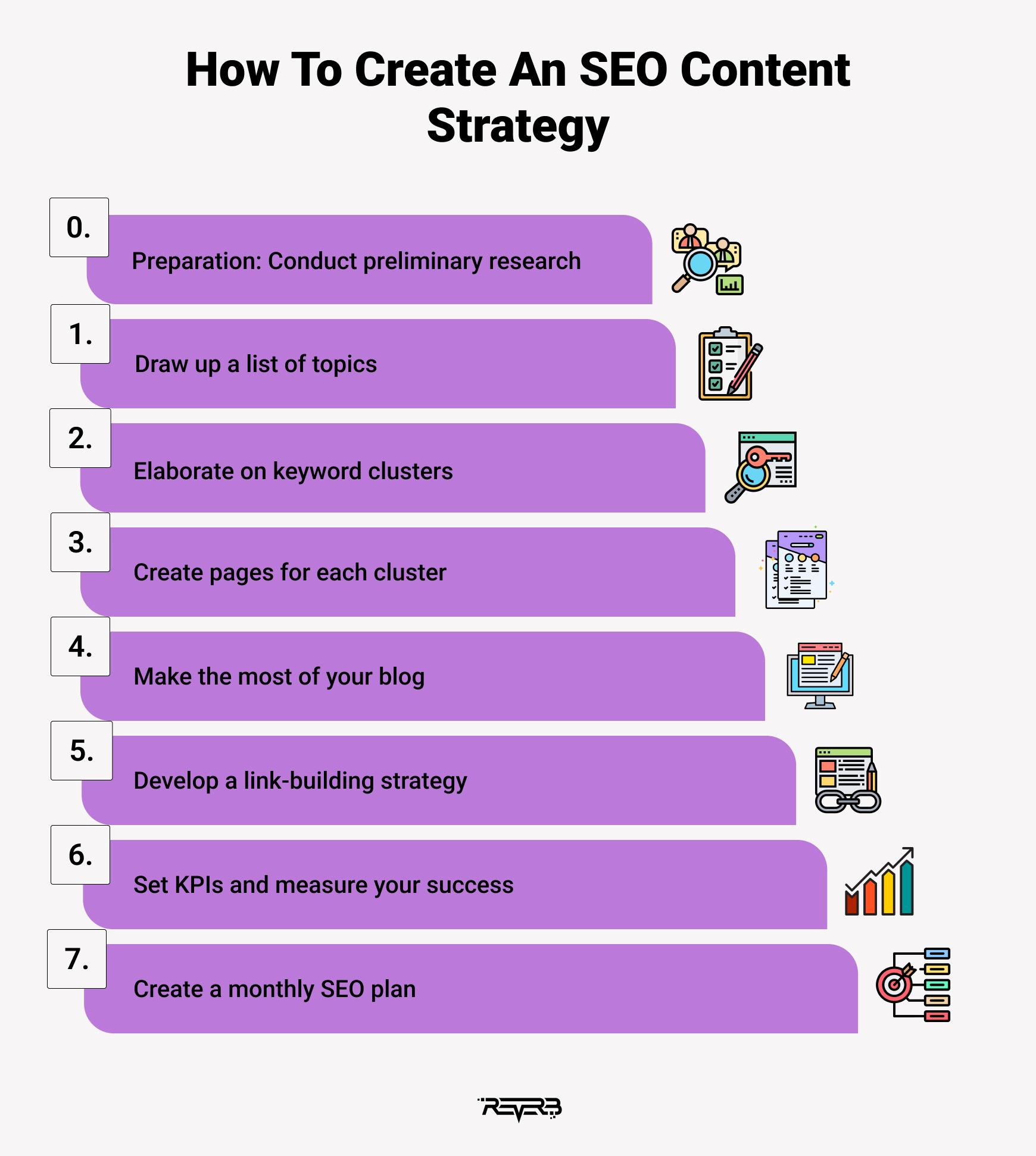
SEO Strategies for Therapists: Getting Found Online
In today’s digital landscape, having a strong online presence is crucial for therapists looking to connect with clients. Effective SEO strategies can significantly enhance your visibility, making it easier for potential clients to find you in search results. Here are some tailored tactics to elevate your online presence:
- Create High-Quality Content: Focus on crafting informative blog posts that address common mental health questions and concerns. This not only showcases your expertise but also helps improve your search engine rankings.
- Optimize Your Website: Ensure your website is user-friendly, mobile-responsive, and fast-loading. A well-structured site with clear navigation encourages visitors to stay longer, which can reduce bounce rates and improve SEO.
- Utilize Local SEO: As a therapist, most of your clients will be searching for services in your area. Optimize your Google My Business profile and include location-based keywords on your website to attract local clients.
- Engage in Social Media: Utilize platforms like Instagram and Facebook to share valuable content, tips, and engage with your audience. Linking back to your website through these channels can drive traffic and enhance your SEO.
Keywords are the backbone of SEO strategy. Conduct thorough keyword research to identify the terms your potential clients are searching for. Incorporate these keywords naturally into your website’s content, titles, and meta descriptions. Long-tail keywords, which are more specific phrases, can often lead to higher conversion rates as they target users with clear intent.
Moreover, building backlinks is another effective method to improve your website’s authority. Collaborate with other mental health professionals, guest post on relevant blogs, or participate in local community events that allow you to promote your website and gain valuable links.
Don’t underestimate the power of online reviews. Encourage satisfied clients to leave positive reviews on platforms like Google and Yelp. A solid collection of positive reviews not only boosts your credibility but also improves your search rankings.
consider adding a FAQ section to your website. Addressing common queries related to therapy can enhance user experience and serve as an excellent opportunity for keyword optimization. This section can also position you as an authority in your field and further engage potential clients.
| SEO Strategy | Benefits |
|---|---|
| High-Quality Content Creation | Builds authority and engages visitors |
| Local SEO Optimization | Increases visibility among local clients |
| Social Media Engagement | Drives traffic and builds community |
| Backlink Building | Enhances website authority and ranking |

Exploring Innovative Therapy Techniques Through Websites
In today’s digital age, therapy has ventured beyond traditional office visits. The emergence of innovative therapy techniques showcased through various therapist websites has opened up a world of possibilities for both practitioners and clients. These platforms not only serve as a window into the therapeutic practices of professionals but also provide valuable resources for individuals seeking help.
Many therapists are leveraging interactive tools on their websites, allowing clients to engage with therapy concepts before even stepping foot into a session. For instance, mindfulness quizzes, self-assessment tools, and interactive worksheets make the therapy process more accessible. These features can demystify therapy, making it less intimidating for newcomers.
Another trend is the integration of video content. Many therapists have started using video blogs or recorded sessions to explain various techniques, such as Cognitive Behavioral Therapy (CBT) or Dialectical Behavior Therapy (DBT). This not only enhances the user’s understanding but also builds trust and rapport. Clients can get a sense of the therapist’s personality and approach from the comfort of their homes.
Moreover, the power of community forums cannot be overlooked. Numerous therapist websites have created safe spaces for clients to share their experiences and challenges. This sense of community can be incredibly therapeutic itself, as individuals realize they are not alone in their struggles. These forums often come with moderation by professionals, ensuring that the discussions remain constructive and supportive.
| Feature | Benefit |
|---|---|
| Interactive Tools | Enhances engagement and accessibility |
| Video Content | Builds trust and understanding of techniques |
| Community Forums | Provides support and shared experiences |
Furthermore, personalized resources are becoming a staple in modern therapy websites. Many professionals now offer customized self-help materials tailored to individual needs. These resources can range from guided meditation audios to reading lists, ensuring clients have tools they can use in their everyday lives.
To top it off, the push for teletherapy has accelerated. Websites now feature seamless integration for teletherapy sessions, where clients can connect with their therapists through secure video calls. This not only provides convenience but also ensures that those who live in remote areas can access quality mental health services without the need for travel.
As we delve into the 25 most inspiring therapist websites this year, it’s essential to recognize how they are reshaping the landscape of therapy. These platforms are not just about offering services; they are about creating a holistic experience that empowers clients to embark on their healing journeys with confidence and support.

The Future of Therapy Websites: Trends to Watch Out For
As we move deeper into 2024, therapy websites are undergoing significant transformations to better meet the needs of clients and therapists alike. Here are some notable trends shaping the future of these digital spaces:
- Personalization: More websites are incorporating personalized user experiences. By utilizing AI and data analytics, therapists can tailor content and resources to individual visitors, enhancing engagement and connection.
- Teletherapy Integration: With the rise of virtual therapy, websites are increasingly integrating telehealth platforms. This allows clients to book sessions directly, streamlining the process and improving accessibility.
- Interactive Tools: Expect to see more websites featuring interactive self-help tools, such as quizzes and guided exercises. These tools empower users to explore their mental health needs actively.
- Visual Storytelling: Websites are evolving into platforms for visual storytelling. Beautiful imagery and videos can create an emotional connection, making the therapist’s approach more relatable and inviting.
- Mobile Optimization: As mobile browsing continues to dominate, therapy websites are prioritizing responsive design. A seamless mobile experience is crucial for reaching clients wherever they are.
- Community Building: Future therapy sites will focus more on community. Features like forums or group therapy sign-up pages can foster connection and support among clients, enhancing their overall experience.
In terms of visual aesthetics, minimalistic designs are gaining traction. Clean, uncluttered layouts not only look modern but also help users navigate information more efficiently. Color psychology is also being leveraged to create calming environments conducive to therapy.
Moreover, integrating client testimonials and success stories will become a standard practice. By showcasing real-life examples, therapists can build trust with potential clients, illustrating the effectiveness of their services in a relatable manner.
Lastly, search engine optimization (SEO) strategies tailored to mental health topics are becoming essential. As more individuals seek online resources, it’s vital for therapy websites to rank higher on search results to reach those in need.
| Trend | Description |
|---|---|
| Personalization | Customized content based on user preferences and behavior. |
| Teletherapy Integration | Streamlined booking and session management for virtual therapy. |
| Interactive Tools | Engaging quizzes and exercises to foster self-exploration. |
| Community Building | Creating support networks through forums and group sessions. |
Frequently Asked Questions (FAQ)
Q&A: 25 Most Inspiring Therapist Websites in 2024
Q: What makes a therapist website inspiring?
A: An inspiring therapist website goes beyond just looking good. It’s about creating a warm, inviting space that resonates with potential clients. Elements like clear messaging, user-friendly navigation, and authentic visuals can convey a therapist’s personality and approach, making visitors feel understood and at ease.
Q: Why is the design of a therapist’s website so important?
A: First impressions matter! A well-designed website not only attracts visitors but also establishes credibility. An aesthetically pleasing and easy-to-navigate site can create a sense of professionalism and trust. It shows that the therapist values their practice and respects the client’s experience.
Q: What are some key features to look for in these inspiring therapist websites?
A: Look for features like engaging About pages that share personal stories, easy-to-find contact information, informative blog sections, and clear service descriptions. Also, consider the use of testimonials, which can build trust and help potential clients feel more confident about reaching out.
Q: Can you give an example of a standout therapist website from the list?
A: Absolutely! One standout is “Therapy with Heart.” Their website combines beautiful visuals with heartfelt writing. The therapist shares her story, which helps clients connect on a personal level. Plus, the site offers valuable resources like self-help articles and guided meditations, making it more than just a business card.
Q: How do inspiring therapist websites cater to diverse audiences?
A: The best therapist websites recognize that everyone’s journey is unique. They include information on various modalities, cater to different demographics, and offer resources in multiple languages. Inclusivity not only broadens their reach but also fosters a sense of belonging for all clients.
Q: What role does content play in these websites?
A: Content is king! Inspiring therapist websites often feature blogs or resources that provide valuable information on mental health topics. This not only demonstrates the therapist’s expertise but also offers visitors something meaningful before they even book a session. It’s a great way to build rapport and trust.
Q: How can therapists use their websites to express their personality?
A: Authenticity is key. Therapists can share their personal philosophy, use their voice in their writing, and choose images that reflect their style. Whether it’s through playful language or serene imagery, the website should feel like an extension of who they are and how they want to connect with clients.
Q: What tips can you share for therapists looking to improve their websites?
A: Start by ensuring your website is mobile-friendly, as many clients browse on their phones. Next, focus on your ‘About’ page—let your personality shine through! Incorporate client testimonials for social proof, and regularly update your content to keep it fresh. Lastly, don’t hesitate to consult a web designer who understands your vision.
Q: Why should therapists take inspiration from the 25 websites featured in your article?
A: These websites are not just examples; they’re a source of creativity and innovation. By exploring what others are doing well, therapists can glean ideas about layout, content, and overall user experience that will elevate their own practice. Inspiration often leads to transformation, and these sites can serve as a roadmap for creating something truly special.
Q: How can readers find the full list of inspiring therapist websites?
A: You can find the complete list in our article titled “25 Most Inspiring Therapist Websites in 2024.” Dive in, explore each site, and let your creativity flow as you think about how you can make your own website a welcoming haven for those seeking support.
The Conclusion
As we wrap up our journey through the 25 most inspiring therapist websites of 2024, it’s clear that the digital landscape is evolving, just like the field of therapy itself. These websites are more than just online business cards; they are gateways to connection, support, and healing. Each site we’ve explored showcases the unique approach and personality of its therapist, proving that a strong online presence can truly enhance the therapeutic experience.
Whether you’re a therapist looking to revamp your own website or someone seeking a professional to guide you on your journey, these examples provide not only inspiration but also a roadmap for creating meaningful online spaces. They remind us that the blend of professionalism and personal touch can foster trust and openness, crucial elements in the therapeutic process.
So, why not take a page from these inspiring examples? Embrace creativity, authenticity, and compassion in your own digital approach, whether you’re crafting a website, sharing your story, or seeking help. The right online presence can make all the difference—not just in attracting clients, but in creating a community where healing can truly thrive.
Thank you for joining us on this exploration. We hope you feel invigorated and motivated to either enhance your own website or find the perfect therapist for your needs. Remember, in the world of therapy and beyond, inspiration is just a click away!



